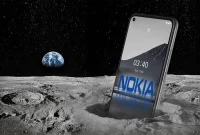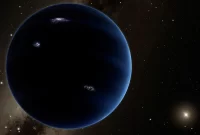NASA’s one-year achievements during 2020 and 2021
In addition to NASA’s planned goals of sending astronauts to the moon and finding extraterrestrials, one of the most important achievements of the past year has been its self-sufficiency and independence from Russian equipment.
Since its official launch on October 1, 1958, NASA has made the most significant human discoveries and achievements in space and galaxies. NASA has carried out a large number of manned and unmanned space flight programs in its history. Unmanned programs led to the first artificial satellite to be sent into Earth orbit for scientific and telecommunication applications. These programs have also led to exploration of the solar system, which began with the launch of probes to Venus and Mars, and includes the Voyager program to explore extraterrestrial planets.
It is interesting to know that this space agency has recently published a report which shows that in 2019, it has managed to generate more than $ 64.3 billion in revenue from the entire US economy. NASA has supported 312,000 jobs during this period, resulting in the payment of about $ 7 billion in taxes. According to NASA Director Jim Brydenstein, this economic return is achieved by investing only half a percent of the US government budget.
Unveiling of the new generation of space clothes
Last year, NASA unveiled a new generation of astronaut suits. Work on the new suit is not over yet, but NASA says they will prepare to protect astronauts on the 2024 return mission to the moon. The new suit, called the “Outer Mobility Unit”, is based on half a century of advances in space suit technology.
The astronauts learned from the Apollo missions that the main danger on the moon is not that its powdery dust does not support the astronauts ‘weight, but that it comes from fine dust particles and glass that can hit astronauts’ clothing straps and life support systems. Infect and penetrate the lungs. As a result, not only are the astronauts’ clothing straps and life support systems designed to be more dust-resistant, but the portable life support system, similar to the backpack, is a miniature version of the Apollo version. , The space shuttle and the International Space Station were used.
The new suit has a communication cap that houses microphones and earphones, and has been replaced by a series of smart microphones inside the suit that can automatically detect the astronaut’s voice, just like the voice assistants found in many homes today. .
The historic mission of two women in space
For the first time in history, two female astronauts marched in October last year (October of last year). Christina Coke and Jessica Mirr replaced one of the International Space Station batteries during the seven-hour, 17-minute spacewalk. Christina Cook arrived at the International Space Station on March 14 on her first space mission and is scheduled to stay at the station until February 2020. In this case, he will set another record. So far, no female astronauts have stayed on the space station for this period.
A woman goes to the moon as the first man
Last year, NASA officially announced its $ 28 billion plan to return to the moon by 2024. As part of its Artemis project, NASA plans to send a female astronaut and a male astronaut to the moon for the first time since humans last landed on the moon in 1972. But NASA’s timetable for implementing the plan depends on a congressional decision to allocate $ 2.3 billion to build the landing system.
“She will be the one who passed the test and flew into space,” said NASA Director Jim Brydenstein of the characteristics of the first female astronaut. Someone with experience on the International Space Station. According to him, the astronaut must have completed an astronaut training course.
Receive information from a probe after 42 years
For the first time in 42 years, the Voyager 2 spacecraft sent information from outside the solar system to Earth. The spacecraft was launched in 1977 and passed through the heliosphere or solar bubble last year . Voyager 2 was able to send a wealth of information, even in more detail, to Earth 11 billion miles away. Research has shown that the spatial heliosphere is more accurate than experts imagine.
Interestingly, the Voyager probe was built to last only 12 years. The spacecraft was actually launched to study planets other than Jupiter, Saturn, Uranus and Vanpton, but continued its journey. The spacecraft will gradually lose contact with Earth over the next decade.
Discover triple black holes
NASA was looking for a pair of black holes that, quite by chance, discovered a more interesting phenomenon. With the help of George Mason University in Virginia, NASA has found a triple set of black holes that collide with each other. What makes this system amazing is that three very large black holes that are swallowing the space around them are in collision with each other. The system, called SDSS J084905.51 + 111447.2, was discovered with the help of several NASA observatories and three telescopes.
Trying to discover water on the moon
NASA plans to send a Viper rover to explore the water. NASA believes that if humans are to settle on the planet, the discovery of water is essential. If all goes according to NASA schedule, the 2022 Viper will land on the moon. NASA’s main purpose is to directly observe and measure water in the dark polar regions of the moon.
The dark parts of the moon have stored water and ice for millions of years because no direct light from the sun shines to melt and evaporate them. The size of the Viper is about the size of a golf cart. The “neutro spectrometer” system mounted on the moon is able to detect the moon’s groundwater sources from the surface.
Advanced search to find extraterrestrials
NASA has begun many programs to find the necessary evidence for the existence of extraterrestrials. NASA scientists believe that in the next 10 years they can detect aliens in space. They have planned several space explorations to explore extraterrestrial life. They plan to send a rover to Mars next year to collect rock samples from the red planet.
Two NASA spacecraft are set to be launched to explore the oceans on the surface of Saturn and Jupiter. In addition, new space telescopes will be sent into space to study extrasolar planets. The purpose of these large-scale programs is to prove the existence of extraterrestrials that may inhabit other planets.
End of NASA lease in Russia, NASA’s most important achievement
June 7 this year marks a turning point for NASA, which once needed Russian equipment to send its astronauts to the International Space Station, this time using SpaceX equipment from a private American company.



